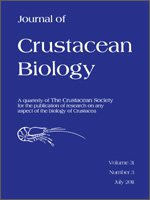The juvenile stages of the isopod family Gnathiidae have a large impact on marine ecosystems through their parasitic interactions with marine fishes, as well as being a substantial food source for the cleaner fish guild. However, the taxonomy of Gnathiidae is based on non-feeding adult males. Adults are difficult to obtain owing to their cryptic lifestyle in the sea floor, while the juveniles can be collected in abundance either from their hosts or using emergence traps. Given the known diversity of the hosts, and assuming host partitioning among species, the diversity of gnathiids could be much greater than currently recognised. We argue that the systematics of this group should recognise this ecological role, and develop the taxonomy of the juvenile stages. We provide a detailed external anatomy of one species, Gnathia aureamaculosa, that has been used extensively in recent ecological studies. Images from scanning electron microscopy of two juvenile instars are compared with two other species, and the literature surveyed to illustrate a range of taxonomically useful traits. The expansion cuticle of the pereion shows how gnathiids are able to expand enormously during a blood meal and also lends caution on using total body length for comparative purposes. A range of morphometric and categorical features are available on the non-expandable sections of the body, such as the head, pleotelson and uropods. Of the three species illustrated, the shape of the eyes and head, and the shape and setation of the pleotelson uropods are diagnostically useful. Evidence from the literature shows that the free-living juveniles are not mancas; the manca instars are passed during the internal developmental period. Anatomical observations cast doubt on the classification of Gnathiidae as Cymothoida, in agreement with recent phylogenetic studies.
How to translate text using browser tools
1 July 2011
Toward a Taxonomy of the Gnathiidae (Isopoda) Using Juveniles: The External Anatomy of Gnathia aureamaculosa Zuphea Stages Using Scanning Electron Microscopy
George D. F. Wilson,
Carrie A. Sims,
Alexandra S. Grutter
ACCESS THE FULL ARTICLE
It is not available for individual sale.
This article is only available to subscribers.
It is not available for individual sale.
It is not available for individual sale.

Journal of Crustacean Biology
Vol. 31 • No. 3
July 2011
Vol. 31 • No. 3
July 2011
Anatomy
Cymothoida
fish parasite
Gnathiidae
Isopoda
SEM




